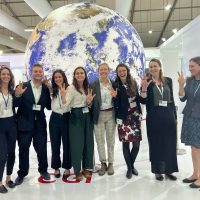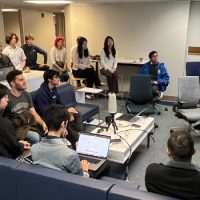by Herschel Pollard
Vanderbilt University and Vanderbilt University Medical Center climbed seven spots in the prestigious survey by the National Science Foundation measuring annual research and development expenditures.
“Our upward leap in these important rankings sends a clear signal: we are already building tremendous momentum and moving swiftly ahead on the vision laid out in Discovery Vanderbilt, our initiative to catalyze discovery and dramatically expand our research funding and impact,” Provost C. Cybele Raver said. “This achievement reflects the hard work and creativity of faculty and staff across the university. And the most exciting part of it is that we are just getting started.”
The combined forces of Vanderbilt University and VUMC, with research and development expenditures exceeding $1 billion in 2021, ranked 10th among private research universities and 24th overall in R&D spending. It was the first time in more than a decade that Vanderbilt landed in the top 25 of the NSF’s annual Higher Education Research and Development Survey—reflecting Vanderbilt’s dedication to continuing excellence and increasing global impact. It was also 80 percent more than 2011’s amount and made up more than 62 percent of all expenditures by reporting institutions, public and private, in Tennessee.
The survey is “the primary source of information … for research and development expenditures within higher education institutions in the United States and outlying areas,” according to the National Science Foundation’s HERD Survey website, making it a good way to compare Vanderbilt with peer institutions.
Vanderbilt climbed to number 10 among private institutions the previous year, ranking above research institutions like Massachusetts Institute of Technology, Northwestern University, University of Southern California and Emory University.
The breadth and depth of research and discovery at Vanderbilt continues to expand across schools and institutes. Examples include grants to chemistry and molecular physiology faculty members Renã Robinson and Antentor Hinton Jr. to promote equity in STEMM; a Ford Foundation grant to Vanderbilt’s Engine for Art, Democracy and Justice; more than $11M to professor of special education Mary Louise Hemmeter to conduct one of the first studies to examine national use of a tiered model of social-emotional supports across PreK and K classrooms and $3M to Vanderbilt School of Nursing faculty Tonya Elkins and Christian Ketel to create a training program, standardized set of competencies and certification for community health workers in Tennessee. These grants are among the many that represent the continuation of outstanding research productivity from faculty across campus and Vanderbilt’s values of belonging, inclusivity and collaboration.
As VUMC is a leading medical institution nationally, life sciences–related research makes up the bulk of expenditures, with more than $800 million spent in 2021. Since 2020, VUMC has led the fight against the COVID-19 pandemic with research including a nationwide study of “convalescent plasma” as a treatment for COVID-19 and development of human monoclonal antibodies as potential treatment.
“These rankings reflect the power of Vanderbilt’s collaborative culture, where working closely together to advance knowledge and drive innovation is innate,” said Dr. Jeff Balser, president and chief executive officer for VUMC and dean of Vanderbilt University School of Medicine. “Our faculty are relentlessly competitive, seeking to address the most challenging problems facing the nation and mankind, such as COVID. These factors helped contribute to this remarkable increase in research and development and the resulting impact.”
Vanderbilt’s research and development grew over the past decade at twice the rate of all reporting institutions in the survey. Only three individual schools in the top 25—NYU, Harvard University and University of Pennsylvania—have grown research and development faster than Vanderbilt.
“Catapulting our research enterprise to even higher levels requires contributions and commitment from every corner of the university, including unwavering support from Chancellor Diermeier,” Raver said. “For our performance in this NSF survey, I especially want to acknowledge the teams led by Vice Provost for Research and Innovation Padma Raghavan, and by Brett Sweet, Vanderbilt’s Chief Financial Officer and Vice Chancellor for Finance and Information Technology. Their contributions have been invaluable in launching Discovery Vanderbilt. I thank them for their work, and I am thrilled about where we’re going from here as we continue to think bigger and reach higher in our efforts to create new knowledge and help address some of the world’s most pressing problems.”






